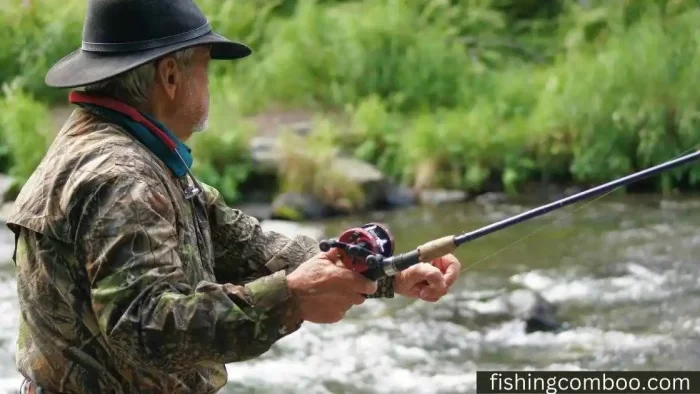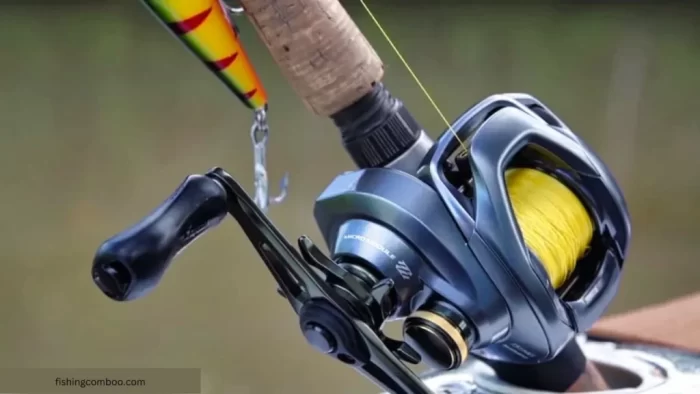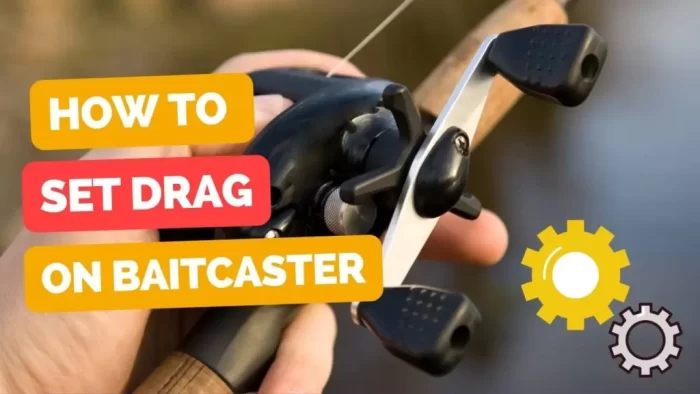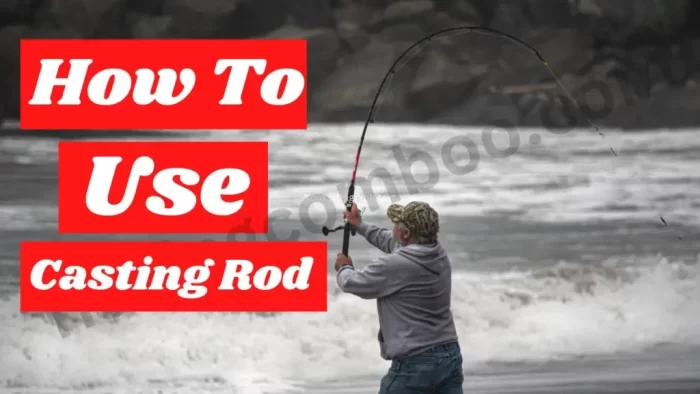
Are you tired of using the same old spinning reel and ready to step up your fishing game? If so, a baitcasting rod might be what you’re looking for. A baitcasting rod is one of the most popular rods used by experienced anglers worldwide. Using this type of fishing rod can be tricky at first, but anyone can learn how to make it work with dedication and practice.
In this blog post, you’ll learn how to use a baitcasting rod for the most effective fishing experience. We’ll look at some of the tools and techniques needed to get started, as well as tips for success and buying guide. So let’s dive in!
The Basics of Baitcaster Rod
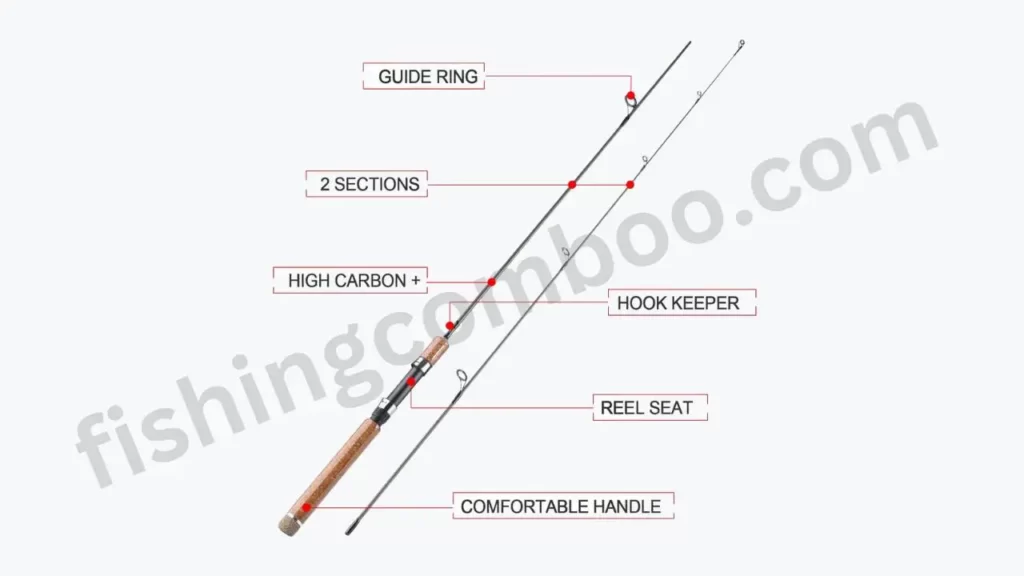
If you’re an avid angler, you’ve heard of baitcaster rods. Experienced fishermen often prefer these specialized rods for their versatility and precision when casting. One of the key benefits of a baitcasting rod is that it allows for more accurate and longer casts than other fishing rods, such as spinning rods.
This is because the line is released directly from the spool rather than pulled off by a spinning motion. This allows for greater control and precision when casting and is particularly useful for targeting specific areas or structures in the water.
But if you’re new to baitcasting, the learning curve can be steep. From selecting the right baitcasting rod to mastering the proper casting technique, there are a few key factors to consider when using a baitcasting rod.
Read Our Review: Best Baitcaster Combo for Beginners
table of contents
How to Use a Baitcaster Rod Complete Guide
Now that you understand the basics of baitcasting let’s look at how to use this type of rod for the most effective fishing experience.
1) Choose the Right Equipment:
Make sure you have a quality baitcasting rod, reel, and line appropriate for your fishing type. Pay attention to the weight and strength ratings of the rod and line, and consider the type of lure or bait you will be using.
2) Set Up the Rod:
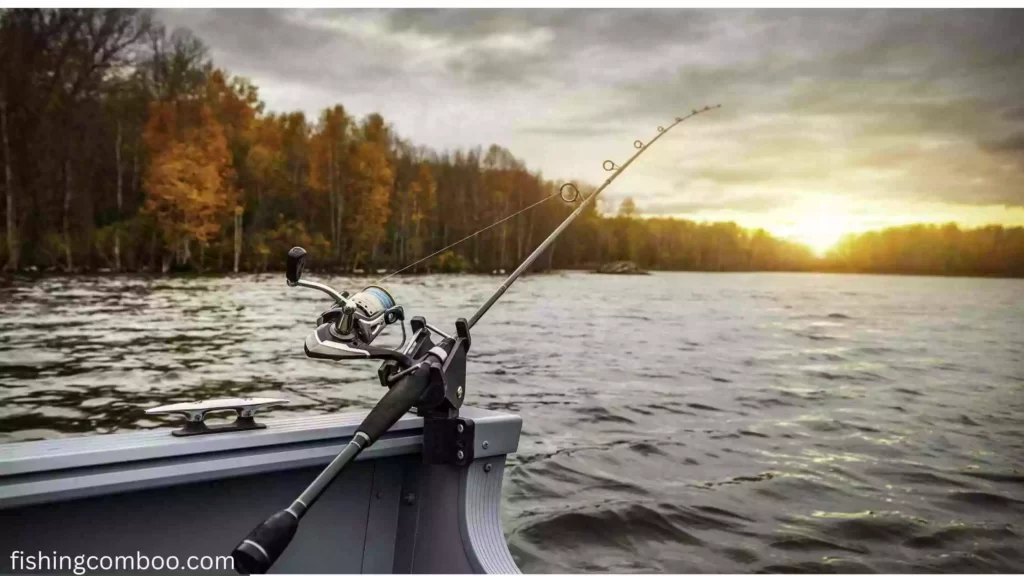
Setting up the rod is an essential step for ensuring effective casting. First, attach the reel to the rod by securely fastening it to one of the guides. Make sure it is tight and secure, as this will help prevent any line tangles or issues with casting.
Next, open up the bail arm and thread the line through the guides. Start at the top and thread each guide until you reach the bottom. Be sure to use a knot that is suitable for baitcasting, such as a Palomar or improved clinch knot.
Once your line is in place, close the bail arm and tighten any loose screws on the reel. This will help to keep everything in place and prevent any line tangles.
3) Set Up Your Reel:
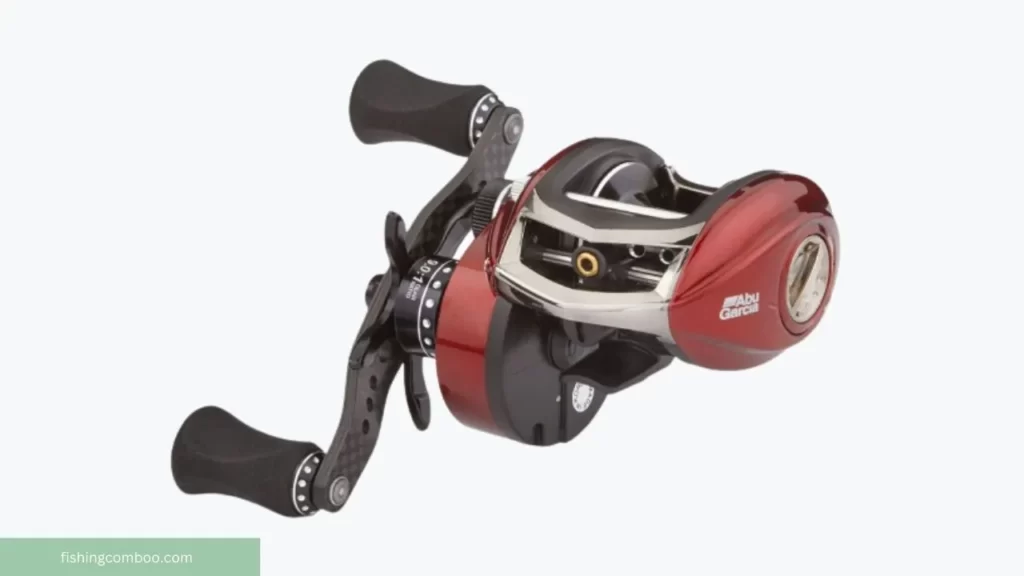
Attach the reel to the rod using the reel seat, and load the spool with the line. Make sure the line is evenly distributed on the spool, and adjust the drag setting to the appropriate level for the size and strength of the fish you target.
4) Choose Your Bait:
Now that your equipment is ready, it’s time to choose your bait. This will depend on the type of fish you’re targeting, but some popular baits include worms, lures, and soft plastics.
5) Hold the Rod Properly:
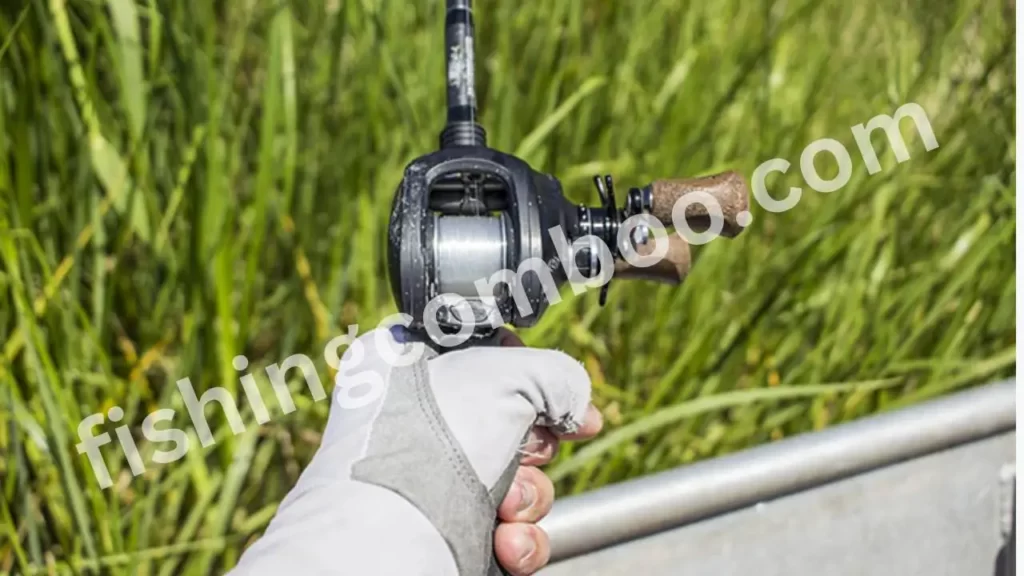
Baitcasting rods have a more extended and ergonomic handle than other types of rods to provide a secure and comfortable grip. Hold the rod with your dominant hand on the handle, and use your thumb to control the spool as you cast.
6) Make a Back Cast:
Hold the rod at a 45-degree angle behind you to begin your cast, with the tip pointing upwards. Open the bail arm (the metal arm that holds the line in place) and use your thumb to gently apply pressure to the spool as you make a smooth backcast.
7) Make a Forward Cast:
As the line begins to unroll from the spool, use your thumb to smoothly and evenly release the pressure on the spool. At the same time, snap your wrist forward and release the line from the bail arm. This will send the line flying toward your target.
8) Reel In the Line:
As the line approaches the end of its trajectory, use your other hand to reel in the slack. Keep a firm grip on the handle, and use a smooth and even motion to bring the line back towards you.
Learn More: How to Put Fishing Line on a Baitcasting Reel
9) Practice, Practice, Practice:
The key to becoming proficient with a baitcasting rod is practice. The more you use it, the more comfortable and confident you will become. Don’t be discouraged if you have trouble at first – it takes time and patience to master the art of baitcasting.
By following these steps, you can learn how to use a baitcaster rod effectively and enjoy its many benefits.
If you’re still confused then you can read our detailed guide about How to Use a Baitcaster For the First Time.
Tips for Success
When using a baitcasting rod, a few tips can help ensure success.
- Always use a rod that is the appropriate weight and strength for your fishing type.
- Make sure you have a quality line and reel and attach them securely to your rod.
- Use the right knot when connecting the line to the reel.
- Start with lighter lures to practice your technique.
- Use a smooth and even motion when casting the line.
- Reel in the slack slowly and steadily.
- Practice, practice, practice! Baitcasting rods become better the more you use them.
With these tips in mind, you’ll succeed with your baitcasting rod!
Components of Baitcasting Rod
Before consulting the buying guide, it is essential to familiarize yourself with the components of a Baitcasting rod.
A baitcasting rod is composed of several key components, including:
Rod Blank:
This is the main structure of the rod, made of a lightweight and strong material such as carbon fiber or fiberglass. The rod blank determines the rod’s overall strength, flexibility, and sensitivity.
Guides:
These small rings are attached to the rod blank and help guide the line as it is cast and retrieved. Guides are usually made of ceramic, stainless steel, or titanium and are placed along the length of the rod to ensure smooth and even line flow.
Reel Seat:
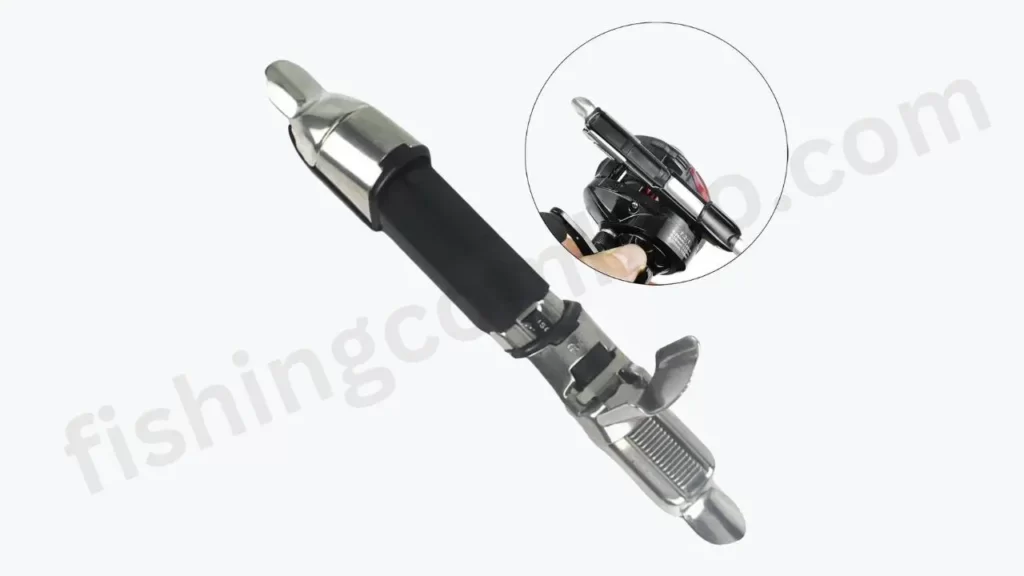
The reel is held in place by this part of the rod. A metal or plastic collar is usually attached to the rod blank, with a screw or locking mechanism to secure the reel.
Handle:
This is the part of the rod that the angler holds onto while casting and reeling in the line. Baitcasting rods often have a more extended and ergonomic handle than other rods to provide a secure and comfortable grip.
By understanding the different components of a baitcasting rod, anglers can make informed decisions about the type of rod that best suits their needs and preferences.
What to Look Before Buying The Best Baitcasting Rod – Guide
When shopping for a baitcasting rod, there are several factors to consider. Here is our guide to help you find the best baitcasting rod.
1) Rod Length:
The ideal length of a baitcasting rod will depend on the type of fishing you plan to do and the size of the fish you are targeting. Generally, smaller rods are better for light tackle fishing, while longer rods provide greater leverage and distance when casting heavier lures or bait.
2) Rod Power:
Power is a vital factor to consider when shopping for a baitcasting rod. A rod with too much power may be too stiff and difficult to control, while a rod with too little power may need more strength for larger fish species. It is crucial to select a rod that has enough power to handle the type of fishing you plan to do.
3) Handle:
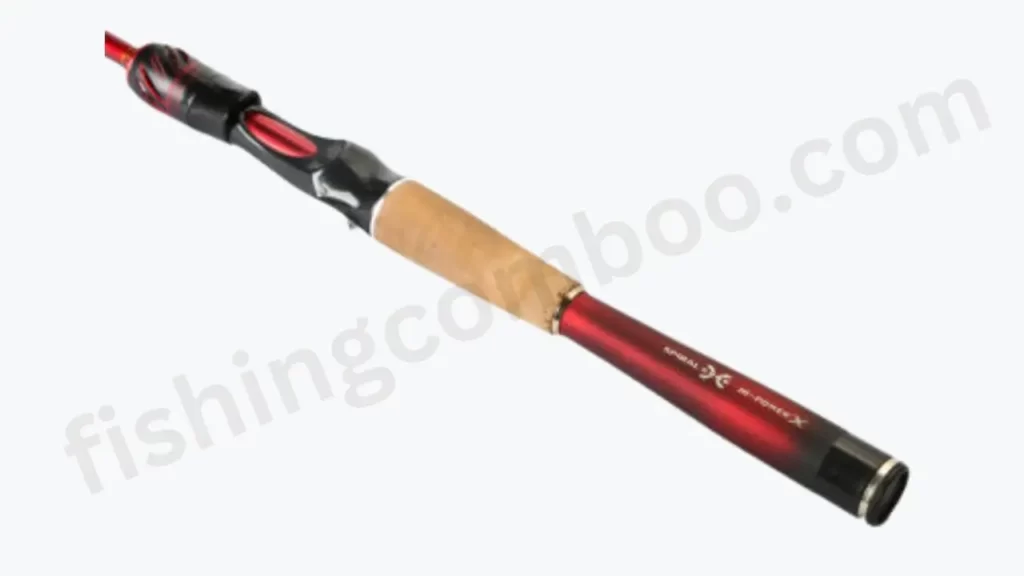
When shopping for a baitcasting rod, the handle is an essential factor. The right handle will provide comfort and control when casting and retrieving your line. Many rods come with either cork or EVA foam handles, which offer a firm grip yet allow some flexibility while fishing.
Hybrid handles combine cork and EVA foam for anglers who prefer more comfort and cushioning. These are more expensive but offer superior comfort and control when fishing.
The cork handle is the traditional option, while EVA foam is slightly lighter and provides a firmer grip. Hybrid handles offer the best of both worlds but are more expensive.
4) Guides:
The guides on a baitcasting rod will determine how smoothly the line casts and retrieves. Typically, larger guides provide better line control and casting distance, while smaller guides are better for lightweight lures and tackle.
Ceramic guides provide the smoothest line flow but are more expensive than stainless steel or titanium guides. It is essential to select a rod with the right size and type of guide for your needs.
5) Reel Seat:
The reel seat on a baitcasting rod will determine how secure the reel is attached to the rod. Typically, metal or graphite seats offer superior strength and durability, while plastic seats are lighter and more affordable. Most baitcasting rods come with adjustable locking mechanisms to ensure that the reel is securely attached.
When shopping for a baitcasting rod, it is essential to consider all these factors. The right baitcasting rod will provide the strength, flexibility, and sensitivity you need for successful fishing.
With the right rod, you can cast farther, retrieve faster, and easily land bigger fish. If you take the time to research, you will definitely find the perfect baitcasting rod for your needs.
Frequently Asked Questions
What is a baitcaster rod used for?
A baitcasting rod is used for various fishing techniques, such as finesse fishing, jigging, trolling, flipping, or pitching. They are typically chosen when accuracy and distance are essential considerations. The rod’s design makes it ideal for precision casting heavy lures and baits.
Additionally, the reel seat on a baitcaster rod is adjustable, allowing the angler to customize the reel’s position for more comfort and better control. Baitcasting rods are also popular among anglers who enjoy fishing with heavier tackle. With a baitcaster rod, you can cast farther and retrieve faster, making it easier to land big fish.
Are Baitcasters better than spinning rods?
It depends on the type of fishing you are doing. Baitcasting rods excel in accuracy and distance, making them ideal for precision casting with heavy lures and baits. They also offer better control over casting speed, making them great for anglers who like to fish with heavier tackle.
On the other hand, spinning rods are lighter and more versatile, making them great for finesse fishing with lightweight lures and baits. Casting with them is also easier and requires less concentration.
Ultimately, it is a matter of personal preference and what type of fishing you plan to do. Many anglers prefer one over the other, while others enjoy using both. If you are just angling, it might be worth trying to see which works best for you.
How do you set up a baitcaster rod?
Setting up a baitcaster rod is relatively straightforward, but it requires a bit of practice to ensure everything is working correctly. First, you will need to assemble the rod and attach the reel to the reel seat. Ensure the reel is securely attached and aligned with the guides for proper casting.
Next, you will need to tie the line onto the reel. You should use a uni or Palomar knot for this step, as it will provide a strong and secure connection between the line and the reel.
Once your line is connected, you can begin spooling your reel with the line. Make sure that the line is even on both sides of the spool and that there are no twists or kinks in the line.
Finally, you should adjust the reel’s drag settings to your needs. This will help ensure a smooth and consistent casting experience with adequate tension for fighting bigger fish. With some practice, you should be able to cast accurately with a baitcaster rod in no time.
Final Verdict
This article has helped you understand the working of baitcasting rods and how to use them. From selecting the right rod to setting up the reel properly, there are a few steps involved in getting started with baitcasting.
But with some practice and patience, any angler can hone their technique and enjoy successful fishing with a baitcaster rod. Whether you prefer spinning or baitcasting rods, it’s essential to take the time to find the right one for your needs.
What type of fishing do you prefer – spinning or baitcasting? Let us know in the comments!



